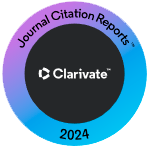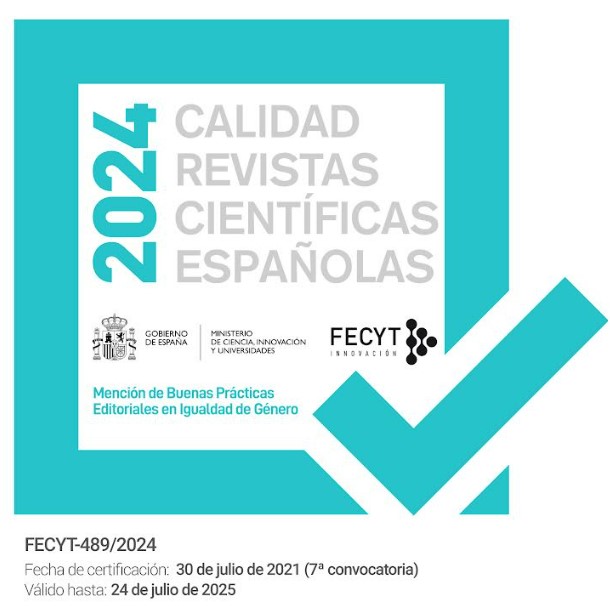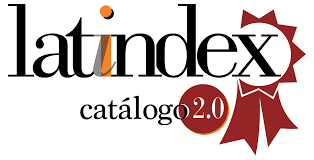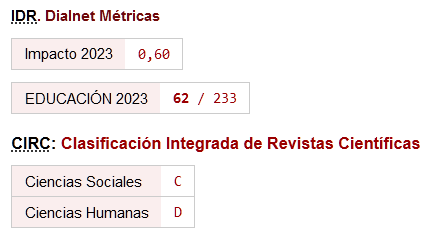The effect of the use of sports education model on the multi-directional development of students: A meta-analysis study
DOI:
https://doi.org/10.46661/ijeri.6338Keywords:
Sports Education, model, multi- directional development, meta-analysis, moderatorAbstract
In this study, the effect of the sports education model in the lessons was examined. A total of 54 data belonging to 39 studies that comply with the inclusion criteria out of 159 studies were collected. The number of samples to which the sports education model is applied and the data is provided is 3.655 people. In the studies examined within the scope of meta-analysis (the use of sports education model), the information and findings regarding the students' multi-directional development areas are the subtitles of the study. According to the results of the research, the effect size of using the sports education model in the multi-directional development area is medium (d = 0.533). As a result of the moderator analysis, significant differences were determined for the education level and publication year.
Downloads
References
Aka, S.T. (2019). The effects of different teaching models on volleyball teaching. [Doctoral Thesis]. Karadeniz Technical University / Institute of Educational Sciences.
Alexander, K. Ve Luckman, J. (2001). Australian teachersí perceptions and uses of the sport education curriculum model. European Physical Education Review, 7(3), 243–267. https://doi.org/10.1177/1356336X010073002
Araujo, R., Mesquita, I., Hastie, P., & Pereira, C. (2016). Students’ game performance improvements during a hybrid sport education–step-game-approach volleyball unit. European Physical Education Review, 22(2), 185-200. https://doi.org/10.1177/1356336X15597927
Arikan, N. (2020). Effect of sport education model-based social-emotional learning program on emotional intelligence. International Education Studies, 13(4), 41-53. https://doi.org/10.5539/ies.v13n4p41
Asma, M., & Soytürk, M. (2018). Examination of volleyball lessons performed by different forms in terms of learning outcomes . Journal of Human Sciences, 15(2), 779-798. https://doi.org/10.14687/jhs.v15i2.5270
Basch, C. (2011). Healthier students are better learners: A missing link in school reforms to close the achievement gap. Journal of School Health, 81(10), 593–598. https://doi.org/10.1111/j.1746-1561.2011.00632.x
Borenstein, M., Hedges, L. V., Higgins, J. P. ve Rothstein, H. R. (2009). İntroduction to meta-analysis. New Jersey: Wiley press. https://doi.org/10.1002/9780470743386
Carpenter, E. J. (2010). The tactical games model sport experience: An examination of student motivation and game performance during an ultimate frisbee unit. [Doctoral dissertation]. University of Massachusetts, Amherst.
Çelen, A. (2012). The effect of volleyball lessons taught with the sports education model on students' cognitive, affective and psychomotor achievement levels. [Doctoral Dissertation]. Gazi University, Ankara.
Çelik, S. (2013). The effect of alternative teaching methods used in elementary mathematics classes on academic success: A meta analysis study. [Master Dissertation]. Osmangazi University, Eskişehir.
Chu, T. L. ve Zhang, T. (2018). Motivational processes in Sport Education programs among high school students: A systematic review. European Physical Education Review, 24(3), 372–394. https://doi.org/10.1177/1356336X17751231
Cho, O., Richards, K. A., Blankenship, B. T., Smith, A. L., & Templin, T. J. (2012). Motor skill development of students enrolled in a sport education volleyball season delivered by in-service physical education teachers. The Physical Educator, 69(4).
Cohen, J. (1960). A coefficient of agreement for nominal scales. Educational and Psychological Measurement, 20(1), 37–46. https://doi.org/10.1177/001316446002000104
Cohen, L., Manion, L. ve Morrison, K. (2011). Research methods in education (7. ed.) New York: Routledge.
Cuevas, R., García-López, L. M., & Serra-Olivares, J. (2016). Sport education model and self-determination theory: An intervention in secondary school children. Kinesiology: International Journal of Fundamental and Applied Kinesiology, 48(1), 30-38. https://doi.org/10.26582/k.48.1.15
Cumming, G. (2012). Understanding The New Statistics: Effect sizes, confidence intervals and meta-analysis. New York: Routledge, Taylor and Francis Group. https://doi.org/10.4324/9780203807002
Doydu, İ., Çelen, A., & Çoknaz, H. (2013). The effect of sports education model on students' attitude towards physical education and sports. E-International Journal of Educational Research, 4(2), 99-110.
Ellis, P. D. (2010). The essential guide to effect sizes. New York: Cambridge University Press. https://doi.org/10.1017/CBO9780511761676
Ennis, C. D. (2014). What goes around comes around… or does it? Disrupting the cycle of traditional, sport-based physical education. Kinesiology Review, 3, 63–70. https://doi.org/10.1123/kr.2014-0039
Evangelio, C., Sierra Díaz, J., González Víllora, S. ve Fernández Río, F. J. (2018). The sport education model in elementary and secondary education: A systematic review. Movimento, 24(3), 931–946. https://doi.org/10.22456/1982-8918.81689
Farias, C. F., Mesquita, I. R., & Hastie, P. A. (2015). Game performance and understanding within a hybrid sport education season. Journal of Teaching in Physical Education, 34(3), 363-383. https://doi.org/10.1123/jtpe.2013-0149
Farias, C., Valério, C., & Mesquita, I. (2018). Sport education as a curriculum approach to student learning of invasion games: Effects on game performance and game involvement. Journal of Sports Science & Medicine, 17(1), 56.
Fernández-Río, J., Méndez-Giménez, A., & Méndez-Alonso, D. (2013). Effects of three instructional approaches in adolescents' physical self-concept. Cultura y Educacion, 25(4), 509-521. https://doi.org/10.1174/113564013808906870
Fernandez-Rio, J., Mendez-Gimenez, A., & Méndez Alonso, D. (2017). Efects of two instructional approaches, sport education and direct instruction, on secondary education students’ psychological response. SPORT TK: Revista Euroamericana de Ciencias del Deporte, 6 (2), 9-20.
Güçoğlu, A. ve Savas, S. (2020). The effect of basketball lessons taught with three different methods in the faculty of sports sciences on students' cognitive affective and psychomotor development levels. Kastamonu Journal of Education, 28(2), 1079–1091.
Hastie, P. (1998). Applied benefits of the sport education model. Journal of Physical Education Recreation & Dance, 69(4), 14–16. https://doi.org/10.1080/07303084.1998.10605530
Hastie, P. A., Sinelnikov, O. A., & Guarino, A. J. (2009). The development of skill and tactical competencies during a season of badminton. European Journal of Sport Science, 9(3), 133-140. https://doi.org/10.1080/17461390802542564
Hastie, P. A., Buchanan, A. M., Wadsworth, D. D., & Sluder, B. J. (2009). The impact of an obstacle course sport education season on students' aerobic fitness levels. Research Quarterly for Exercise and Sport, 80(4), 788-791. https://doi.org/10.1080/02701367.2009.10599620
Hastie, P. A., Calderón, A., Rolim, R. J. ve Guarino, A. J. (2013). The development of skill and knowledge during a sport education season of track and field athletics. Research Quarterly for Exercise and Sport, 84(3), 336–344. https://doi.org/10.1080/02701367.2013.812001
Hastie, P. A., De Ojeda, D. M., Ve Luquin, A. C. (2011). A review of research on Sport Education: 2004 to the present. Physical education and sport pedagogy. Physical Education and Sport Pedagogy, 16(2), 103–132. https://doi.org/10.1080/17408989.2010.535202
Hastie, P.A. ve Wallhead, T. (2016). Models-based practice in physical education: The case for sport education. Journal of Teaching in Physical Education, 35(4), 390–399. https://doi.org/10.1123/jtpe.2016-0092
Hernández-Andreo, L., Gómez-Mármol, A., & Cifo-Izquierdo, M. I. (2020). Effects on Motivation and Implicit Beliefs about Self ability using the Sports Education Model and the Traditional Style in Secondary Education. Sustainability, 12(9), 3843. https://doi.org/10.3390/su12093843
Kahraman, Y. (2019) The effect of volleyball teaching with sports education model on the motor performance and problem solving skills of 11-13 year old girls volleyball players. Master Thesis. Akdeniz University / Institute of Health Sciences.
Koyuncuoğlu, K. (2015). The effects of gymnastics lessons taught with sports education model on students' cognitive, affective and psychomotor achievement levels. (Doctoral Thesis). Gazi University, Institute of Educational Sciences.
Landis, J. R. ve Koch, G. G. (1977). The measurement of observer agreement for categorical data. Biometrics, 33, 159–174. https://doi.org/10.2307/2529310
MacPhail, A., Gorely, T., Kirk, D., & Kinchin, G. (2008). Children's experiences of fun and enjoyment during a season of sport education. Research Quarterly for Exercise and Sport, 79(3), 344-355. https://doi.org/10.1080/02701367.2008.10599498
Mahedero, P., Calderón, A., Arias-Estero, J. L., Hastie, P. A., & Guarino, A. J. (2015). Effects of student skill level on knowledge, decision making, skill execution and game performance in a mini-volleyball Sport Education season. Journal of Teaching in Physical Education, 34(4), 626-641. https://doi.org/10.1123/jtpe.2014-0061
Méndez-Giménez, A., Fernández-Río, J., & Méndez-Alonso, D. (2015). Sport education model versus traditional model: effects on motivation and sportsmanship. Revista Internacional de Medicina y Ciencias de La Actividad Física y Del Deporte, 15(59). https://doi.org/10.15366/rimcafd2015.59.004
Meroño, L., Calderón, A., & Hastie, P. A. (2016). Effect of Sport Education on the technical learning and motivational climate of junior high performance swimmers. RICYDE. Revista Internacional de Ciencias del Deporte, 12(44), 182-198. https://doi.org/10.5232/ricyde2016.04407
Mesquita, I., Farias, C., & Hastie, P. (2012). The impact of a hybrid sport education–invasion games competence model soccer unit on students’ decision making, skill execution and overall game performance. European Physical Education Review, 18(2), 205-219. https://doi.org/10.1177/1356336X12440027
Miles, M. B. ve Huberman, A. M. (1994). Qualitative data analysis: An expanded sourcebook. California: Thousand Oaks.
Moher, D., Liberati, A., Tetzlaff, J., Altman, D. ve The PRISMA Group. (2009). Preferred reporting items for systematic reviews and meta-analyses: The PRISMA statement. PLoS Med, 6(7), e1000097 https://doi.org/10.1371/journal.pmed.1000097
Opstoel, K., Chapelle, L., Prins, F. J., De Meester, A., Haerens, L., van Tartwijk, J. ve De Martelaer, K. (2020). Personal and social development in physical education and sports: A review study. European Physical Education Review, 26(4), 797–813. https://doi.org/10.1177/1356336X19882054
Parker, M. B. ve Curtner-Smith, M. (2005). Health-related fitness in sport education and multi-activity teaching. Physical Education & Sport Pedagogy, 10(1), 1–18. https://doi.org/10.1080/1740898042000334872
Pereira, J., Araújo, R., Farias, C., Bessa, C., & Mesquita, I. (2016). Sport education and direct instruction units: Comparison of student knowledge development in athletics. Journal of Sports Science & Medicine, 15(4), 569.
Perlman, D. J. (2011). Examination of self-determination within the sport education model. Asia-Pacific Journal of Health, Sport and Physical Education, 2(1), 79-92 https://doi.org/10.1080/18377122.2011.9730345.
Perlman, D. (2012). The influence of the Sport education model on amotivated students’ in-class physical activity. European Physical Education Review, 18(3), 335-345. https://doi.org/10.1177/1356336X12450795
Perlman, D. (2012). The influence of the sport education model on developing autonomous instruction. Physical Education and Sport Pedagogy, 17(5), 493-505. https://doi.org/10.1080/17408989.2011.594430
Perlman, D. (2010). Change in affect and needs satisfaction for amotivated students within the sport education model. Journal of Teaching in Physical Education, 29(4), 433-445. https://doi.org/10.1123/jtpe.29.4.433
Perlman, D., & Caputi, P. (2017). Examining the influence of Sport Education on the precursors of amotivation. European Physical Education Review, 23(2), 212-222. https://doi.org/10.1177/1356336X16643921
Petticrew, M. ve Roberts, H. (2006). Systematic reviews in the social sciences. Massachusetts: Blackwell Publishers Ltd. https://doi.org/10.1002/9780470754887
Pritchard, T., Hawkins, A., Wiegand, R., & Metzler, J. N. (2008). Effects of two instructional approaches on skill development, knowledge, and game performance. Measurement in Physical Education and Exercise Science, 12(4), 219-236. https://doi.org/10.1080/10913670802349774
Puente-Maxera, F., Méndez-Giménez, A., & Martínez de Ojeda, D. (2020). Sports education and ıntroduction to ınvasion sports in early primary education. Apunts. Educación Física y Deportes, 140, 23-30. https://doi.org/10.5672/apunts.2014-0983.es.(2020/2).140.04
Puente-Maxera, F., Méndez-Giménez, A., & de Ojeda, D. M. (2020). Physical activity levels during a Sport Education season of games from around the world. European Physical Education Review, 27(2), 240–257. https://doi.org/10.1177/1356336X20939591
Rocamora, I., González-Víllora, S., Fernández-Río, J. ve Arias-Palencia, N. M. (2019). Physical activity levels, game performance and friendship goals using two different pedagogical models: Sport Education and Direct Instruction. Physical Education and Sport Pedagogy, 24(1), 87–102. https://doi.org/10.1080/17408989.2018.1561839
Siedentop, D. (1994). Sport Education: Quality PE through positive sport experiences. Human Kinetics Publishers. Champaingn: Human Kinetics.
Siedentop, D., Hastie, P. ve Van der Mars, H. (2011). Complete guide to Sport Education (2. bs.). Champaign: Human Kinetics Sussex.
Spittle, M., & Byrne, K. (2009). The influence of sport education on student motivation in physical education. Physical Education and Sport Pedagogy, 14(3), 253-266. https://doi.org/10.1080/17408980801995239
Sural, V., & Savaş, S. (2015). The effect of basketball lesson taught with different teaching methods on students' psychomotor achievement levels. Kastamonu Journal of Education, 25(1), 345-360.
Van der Mars, H., Tannehill, D., Lund, J. ve Tannehill, D. (2010). Sport education: Authentic sport experiences. Standards-based physical education curriculum development, 2, 297–331.
Viera, A. J. ve Garrett, J. M. (2005). Understanding interobserver agreement: The Kappa statistic. Family Medicine, 37(5), 360–363.
Wallhead, T. ve O’sullivan, M. (2005). Sport education: Physical education for the new millennium? Physical Education and Sport Pedagogy, 10(2), 181–210. https://doi.org/10.1080/17408980500105098
Wallhead, T. L., & Ntoumanis, N. (2004). Effects of a sport education intervention on students’ motivational responses in physical education. Journal of teaching in physical education, 23(1), 4-18. https://doi.org/10.1123/jtpe.23.1.4
Wallhead, T. L., Garn, A. C., & Vidoni, C. (2014). Effect of a sport education program on motivation for physical education and leisure-time physical activity. Research Quarterly for Exercise and Sport, 85(4), 478-487. https://doi.org/10.1080/02701367.2014.961051
Ward, J. K., Hastie, P. A., Wadsworth, D. D., Foote, S., Brock, S. J., & Hollett, N. (2017). A sport education fitness season’s impact on students’ fitness levels, knowledge, and in-class physical activity. Research Quarterly for Exercise and Sport, 88(3), 346-351. https://doi.org/10.1080/02701367.2017.1321100
Wright, R. W. (2005). The sport education model and self -determination: Contributions to junior high aerobic fitness. [Doctoral Dissertation]. University of Idaho. Available from ProQuest Dissertations & Theses Global. (305003623).
Published
How to Cite
Issue
Section
License
Copyright (c) 2022 Hulusi Böke

This work is licensed under a Creative Commons Attribution-NonCommercial-NoDerivatives 4.0 International License.












